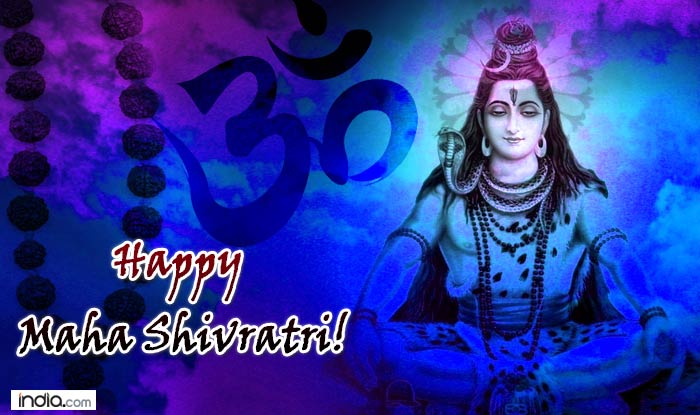
21 Feb 2020 HYN Himalayan Yoga Academy
OM NAMAH SHIVAYA – HAPPY MAHA SHIVARATRI DAY
Maha Shivaratri, which means ‘Great Night of Shiva’, is a Hindu festival, the day of Worship, largely celebrated in Nepal and India as well. But in Nepal is more valuable and popularized because of Pashupati Temple, one of the greatest Hindu temples or Shiva Temple, located in Kathmandu, Nepal. On this Day, more than a million Hindus from all over the world visit this Temple here in Kathmandu and celebrate to venerate Lord Shiva, an important deity in Hindu Culture. This is celebrated on the NEW MOON in the month of Magha according to the Nepali calendar.
Maha Shivaratri is a major festival for the millions of Hindus devotes and is celebrated with devotion and enthusiasm in Nepal and India. On the Shivaratri Day, people start thronging the numerous Shiva temples to offer the traditional worship. Many devotees keep fast on the day and stay awake for the whole night chanting Shiva mantras and devotional songs. People also greet each other and send their good wishes.
Shiva and Yoga : Maha Shivaratri
Shiva radiates as the original light of existence and embodies the immortal Prana—the life force—with supreme Yoga Bal, or yogic power. He brings light into darkness and destroys evil. Though revered as one of the three great deities of Hinduism, Shiva first stands as a Yogi. He is Adiyogi, the first yogi; Adinatha, the original master; Mahayogi, the great yogi; and Yogeshwara, the lord of yoga. Shiva lives as the ultimate yogi who embodies and governs all aspects of yoga through the body, energy, mind, emotion, and cosmic intelligence.
To understand the origins of Yoga and the role of all Yoga practices today, we must first recognize Shiva as the eternal source of Yoga—the supreme consciousness and cosmic intelligence that drives the universe. Shiva initiated Yoga Chaturtha, a complete system that encompasses every stage of yogic development. He introduced Hatha Yoga to purify and empower the body, Mantra Yoga to cleanse and focus the mind, Laya Yoga to align the body with rhythm and energy, and Raja or Dhyana Yoga to connect with eternal, supreme consciousness.
Shiva established himself as the father of Asana practice by creating 8.4 million (84 lakhs) postures through his intense Sadhana and yogic exploration. His deep connection with Yogasanas, both known and unknown today, originates directly from his practice. As Nataraj, Shiva expresses yoga not only through posture but also through divine dance, reflecting the essence of Asanas. Today, practitioners recognize 84 Asanas as the foundational standard, with Siddhasana highly recommended for Dhyana (meditation).
Shiva symbolizes the immortal prana, the undying force of eternal existence and pure being, and is honored as Mritunjaya (conquers death). The Tantric Yoga practice about prana /kundalini relates to Shiva, who holds the inner power of Pranayama. Pranic Mantras, So Ham that relate to Shiva, are called today Aajapa Japa Dhyana / Meditation.

Natrajasana : Shiva Dance PoseShiva is the source of all Mantras, so his one creation is Mantra Yoga as well. He is himself Omkara, the primordial cosmic sound/divine sound, and from his drum all the letters of the Sanskrit alphabet arise and reverberate. It is the so-called “Mantra Moolam Gurur Vakyam,” which means the main mantra is the words of Guru, who is the first Guru, Maha-Guruthe or Adiguru. Shiva is said to be all the vowels, but he encompasses every aspect of primal sound, nada (Sound), and music.
Shiva is the supreme source/ Lord of Dhyana (Meditation), always researched and felt minutely seated in deep meditation, by reciting the pranava or watching the breath, watching the thoughts, being thoughtless and uniting the entire universe into himself for wakening kundalini motive to endless exploration and expansion of cosmic intelligence i.e. isolation.
In his youthful form as Dakshinamurti, Shiva takes the role of the master of Jnana Yoga—the Yoga of Knowledge. He teaches through the silent power of the awakened mind, using manan (deep contemplation) and nidhidhyasana (the constant inner presence through practice). Shiva begins by teaching his first student, his wife Parvati, and then enlightens the Sapta Rishis, along with all the gods, goddesses, sages, and seers. As the original guru of wisdom, he becomes known as Adi Shankar, the one who expounds the profound philosophy of Advaita, or non-dualist Vedanta—a direct manifestation of Shiva’s infinite intelligence.
By Swami Yoga Subodh
